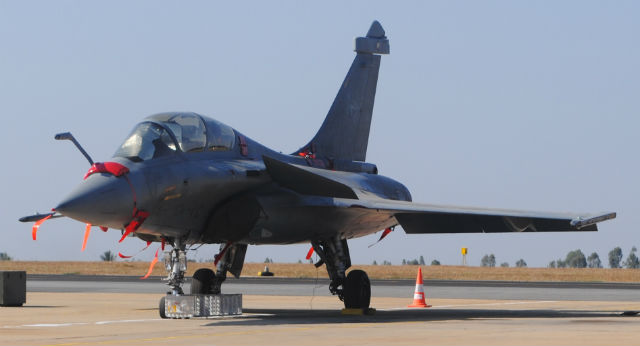India has officially ended its Medium Multi Role Combat Aircraft (MMRCA) programme with the formal withdrawal of a request for proposals covering the acquisition of 126 new fighters for the nation's air force.
Defence minister Manohar Parrikar told the country's parliament it was no longer proceeding with the requirement – nominally won by the Dassault Rafale – which would have seen a large number of aircraft produced in-country.
The cancellation of India’s 2007 tender has been long expected, with April seeing Prime Minister Narendra Modi announce, during a visit to France, that India would only acquire 36 of the Rafales shortlisted in 2012 for the MMRCA programme.
These would be acquired in fly-away condition “as soon as possible”, Modi said, keeping in view the “critical operational necessity” of the Indian air force.
An Indian negotiating team is now working towards the finalisation of a draft agreement, though no timelines have been given as to when the contract for 36 fighters will be concluded. There remains plenty of conjecture as to whether additional French-built Rafales will be acquired, or whether some production would be transferred to India – as was the intention under MMRCA – at a later date.
Former air force chief of the air staff ACM Fali Homi Major is confident that additional Rafales will be needed. “This was a well thought decision taken as an interim measure with, I am sure, with more to follow in a government-to-government agreement which will be finalised soon,” he tells Flightglobal.
There appears be a realisation that the inter-governmental deals are the best way forward for future acquisitions, given the successful procurement of platforms such as the Boeing C-17 Globemaster and P-8I and the Lockheed Martin C-130J. Indeed, all Indian fighter procurements to date have been through this route.

Aaron Chong/Flightglobal
Major, who during his tenure oversaw a number of important air force acquisitions, says he is convinced that this is the correct path to follow.
“Once a platform or weapon system, which cannot be indigenously designed, developed and manufactured in India, is identified, evaluated and selected, a [government-to-government] discussion – followed by an agreement by the parent government of the manufacturer – must become the mandated process to procure military platforms/weapon systems, especially of a strategic nature," he says.
However, the decision to go for smaller number of Rafales now means that air force plans to recapitalise its fighter fleet are in disarray. The service will be down to 32 combat squadrons by the end of the year, 10 fewer than its sanctioned strength and 13 fewer than the 45 it says it needs.
Source: FlightGlobal.com
















